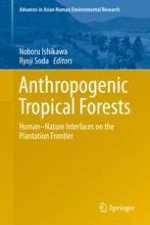2020 | OriginalPaper | Buchkapitel
23. Oil Palm Plantations and Bezoar Stones: An Ethnographic Sketch of Human–Nature Interactions in Sarawak
verfasst von : Katsumi Okuno, Tetsu Ichikawa
Erschienen in: Anthropogenic Tropical Forests
Verlag: Springer Singapore
Aktivieren Sie unsere intelligente Suche, um passende Fachinhalte oder Patente zu finden.
Wählen Sie Textabschnitte aus um mit Künstlicher Intelligenz passenden Patente zu finden. powered by
Markieren Sie Textabschnitte, um KI-gestützt weitere passende Inhalte zu finden. powered by
